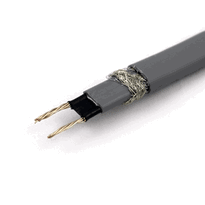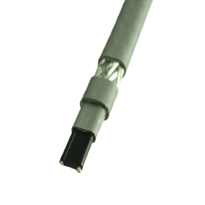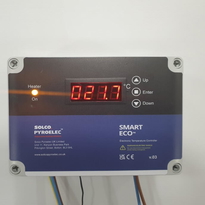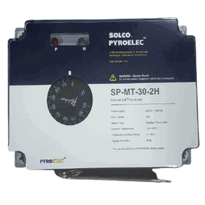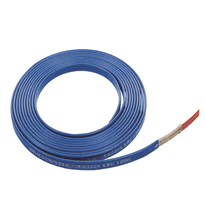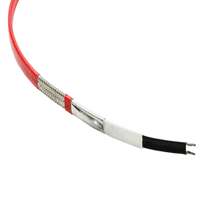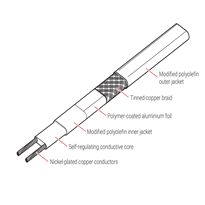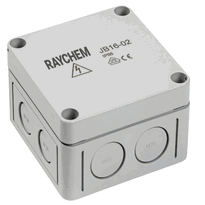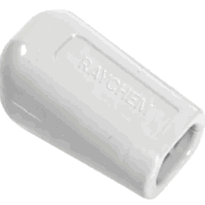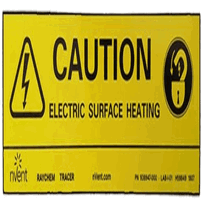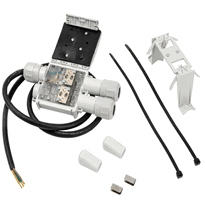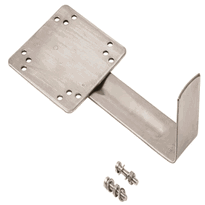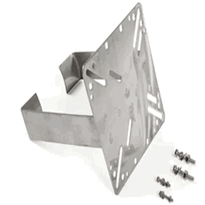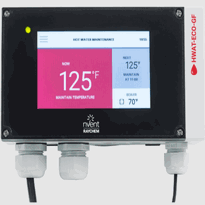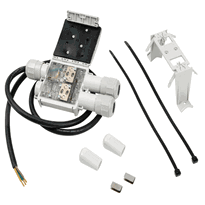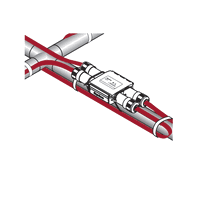Heat Tracing for Water Pipes
Heat tracing for water pipes involves installing electric heating cables or fluid circulation systems designed to prevent freezing and maintain consistent water temperatures in cold environments. Systems typically utilise self-regulating, constant wattage, or mineral insulated cables, often combined with sensors and controllers for precise temperature management.
Proper installation includes securely fastening cables evenly around pipes, cleaning surfaces thoroughly beforehand, and applying suitable insulation. Adherence to safety standards and manufacturer instructions is essential to ensure safe and effective operation.
Further guidance on optimisation includes designing systems tailored to specific circumstances, selecting appropriate cable types and power ratings, and implementing effective control strategies. Attention should also be given to regular maintenance and inspection routines to sustain system performance and safety.
Overview of Heat Tracing Systems for Water Pipelines
Heat tracing systems are specialised methods used to maintain or raise the temperature of water within pipelines, particularly in environments where low temperatures could lead to freezing. These systems employ electric heating cables or other heating technologies to ensure that water remains in a liquid state during cold conditions. The cables are designed with self-regulating technology, enabling them to automatically adjust their heat output based on ambient temperatures, which enhances energy efficiency and safety. Self-regulating cables adjust output automatically based on ambient temperature, which reduces the risk of overheating and conserves energy. Installation involves wrapping the cables around the pipes and applying insulation to minimise heat loss. Sensors and controllers are utilised to provide accurate and reliable temperature regulation. Heat tracing is vital for applications that require continuous water flow, such as municipal water supplies or industrial processes. When designing such systems, careful consideration is given to pipe dimensions, environmental conditions, and energy efficiency objectives. Properly implemented heat tracing systems offer dependable protection against freezing and help prevent system failures, thus ensuring consistent operation in cold weather conditions.
Types and Technologies of Electric and Fluid Heat Tracing
Different types of electric and fluid heat tracing systems utilise a range of technologies designed to maintain or raise pipe temperatures effectively under various operational and environmental conditions. Understanding these systems is crucial for ensuring optimal performance in industrial, commercial, or infrastructural settings.
Electric heat tracing includes several key types:
Self-regulating cables adapt their heat output based on the temperature of the surroundings. They automatically increase or decrease their heating power to prevent overheating, making them ideal for freeze protection and delicate pipework. These cables are safe and energy-efficient, providing consistent performance regardless of pipe length or environmental changes. They are also resistant to damage from mechanical stresses Additionally, self-regulating cables can incorporate emergency shutdown features for enhanced safety in critical applications.
Constant wattage cables deliver a uniform level of heat along the entire length of the pipe. This consistent heat output makes them suitable for applications involving long pipe runs or temperature-critical fluids, such as in chemical processing or refineries. They are robust and designed to handle demanding conditions.
Mineral insulated cables are constructed with mineral-based components that withstand high temperatures and harsh environments. Their durability makes them well-suited for industrial processes that involve extreme conditions, ensuring reliable operation in demanding settings.
Control systems associated with electric heat tracing vary from simple thermostats to sophisticated, remotely monitored controllers such as the RTD-100. These systems allow for precise regulation of pipe temperatures, enhancing safety and efficiency by avoiding energy wastage and ensuring consistent process conditions.
Fluid heat tracing involves circulating hot water or steam alongside pipes to provide a continuous supply of heat. This method is particularly effective in applications requiring steady temperature maintenance, such as chemical processing, refineries, or district heating networks. Fluid tracing systems can be designed for single-pipe circulation or two-pipe systems, depending on the requirements.
Selecting an appropriate heat tracing system depends on several factors, including the material and insulation of the pipe, its length, and the operational environment. Proper system design ensures reliable and efficient temperature management, minimising energy consumption and safeguarding against freeze damage or process disruptions.
Type |
Technology |
Application examples |
| Self-regulating cables | Adjust heat based on temperature | Freeze protection, delicate or varying ambient temperature pipes |
| Constant wattage cables | Provide uniform heat | Long pipe runs, temperature-sensitive fluids |
| Mineral insulated cables | High temperature resilience, durability | Extreme environments, industrial applications |
Understanding the distinctions and appropriate applications of these heat tracing technologies enables industry professionals to optimise their systems effectively, ensuring safety, energy efficiency, and operational reliability.
Installation Techniques and Safety Standards
Proper installation of heat tracing systems is vital to guarantee their efficiency, safety, and long-term dependability. Following precise installation procedures helps prevent faults and reduces the risk of accidents, ensuring the system functions effectively throughout its lifespan.
Accurate Cable Positioning
Installation starts with correct cable placement. Typically, cables are laid at the 4 o'clock or 8 o'clock positions around pipes to promote even heat distribution. Proper positioning prevents cold spots and improves system performance.
It's essential to secure cables firmly to the pipe surface, ensuring they don't shift or become damaged during operation or maintenance.
Careful Insulation Application
Insulation must be applied carefully using suitable thermal materials, such as self-adhesive glass cloth tape or other recommended thermal insulation wraps. Proper insulation reduces heat loss, improves energy efficiency, and protects the system from external environmental factors.
Careful handling prevents gaps or compression in the insulation layer, which could compromise its effectiveness.
Protection of Cables Before Installation
Cables should be stored in dry, cool environments to prevent damage before installation. Exposure to moisture, heat, or mechanical stress during storage can compromise cable integrity, leading to potential failures once operational.
Ensuring proper storage conditions extends the lifespan of the cables and maintains their integrity until installation.
Pre-Installation Checks
Before commencing installation, performed checks such as pressure testing the piping system are crucial to detect any leaks or faults.
Verifying electrical integrity at 2,500 volts DC ensures the wiring and terminations are sound and safe. These assessments help identify and rectify issues early, increasing overall system reliability.
Utilizing a Trade and Credit Account can streamline sourcing high-quality testing equipment and insulation materials for professional installation standards.
Safety Measures During Installation
Adherence to safety standards is paramount. Installation personnel must wear appropriate personal protective equipment (PPE) and comply with electrical safety standards applicable in the UK.
Specific procedures for hazardous or potentially explosive environments, such as designated zones, must be followed meticulously to prevent accidents.
Properly rated equipment and certified materials should be used in accordance with local regulations.
Correct Attachment and Surface Preparation
Attaching cables securely to clean pipe surfaces ensures good thermal contact and prevents movement during use. Surface cleaning removes dirt, grease, or corrosion that could impede heat transfer or cause damage to the cables.
Additionally, accurate placement of temperature sensors is vital to monitor and control the system effectively, maintaining safety and efficiency.
Ensuring System Efficiency and Safety
Throughout the installation process, attention to detail in cable attachment, insulation, and sensor placement enhances system performance.
Regular inspection and adherence to safety standards safeguard personnel and prevent operational hazards.
Key Factors for Effective Heat Tracing Design
Effective heat tracing design begins with a comprehensive assessment of the thermal and environmental conditions that influence heat loss and system performance. This process involves establishing the minimum ambient temperature at the installation site, which is essential for evaluating heat loss potential and determining the necessary temperature differentials. Definition of Pipe Heat Tracing Additionally, the temperature of the fluid within the pipe must be considered to define a baseline for heat requirements. Calculating the temperature difference between the fluid and the surrounding environment is crucial for accurate power estimation. For outdoor installations, factors such as wind speed and exposure to the elements significantly increase heat loss, thereby impacting the wattage needed to maintain system integrity. The physical characteristics of the pipe—including its diameter, insulation type, and thickness—must be measured accurately and incorporated into the power calculations. Special attention should also be given to thermal sinks such as valves, flanges, and fittings, which can affect heat retention and distribution within the system. In addition, selecting appropriate self-regulating electric heat trace cables allows for adaptable and energy-efficient system performance. Incorporating safety margins and accounting for environmental variations ensures the heat tracing system maintains consistent and reliable performance. This proactive approach helps prevent freezing and potential damage under fluctuating operating conditions, safeguarding the longevity and efficiency of the entire piping network. It is equally important to consider the insulation material properties to maximize thermal efficiency and reduce energy consumption.
Conclusion
Effective heat tracing for water pipes depends on selecting suitable systems, understanding various technologies, and complying with correct installation and safety standards. Careful assessment of environmental conditions, pipe specifications, and insulation is essential to ensure reliable operation and prevent freezing or damage. Proper design involves evaluating temperature requirements, power sources, and maintenance considerations, which together enable energy-efficient and long-lasting solutions. Adhering to these principles guarantees the safety, efficiency, and durability of water pipeline systems across diverse operational environments.








